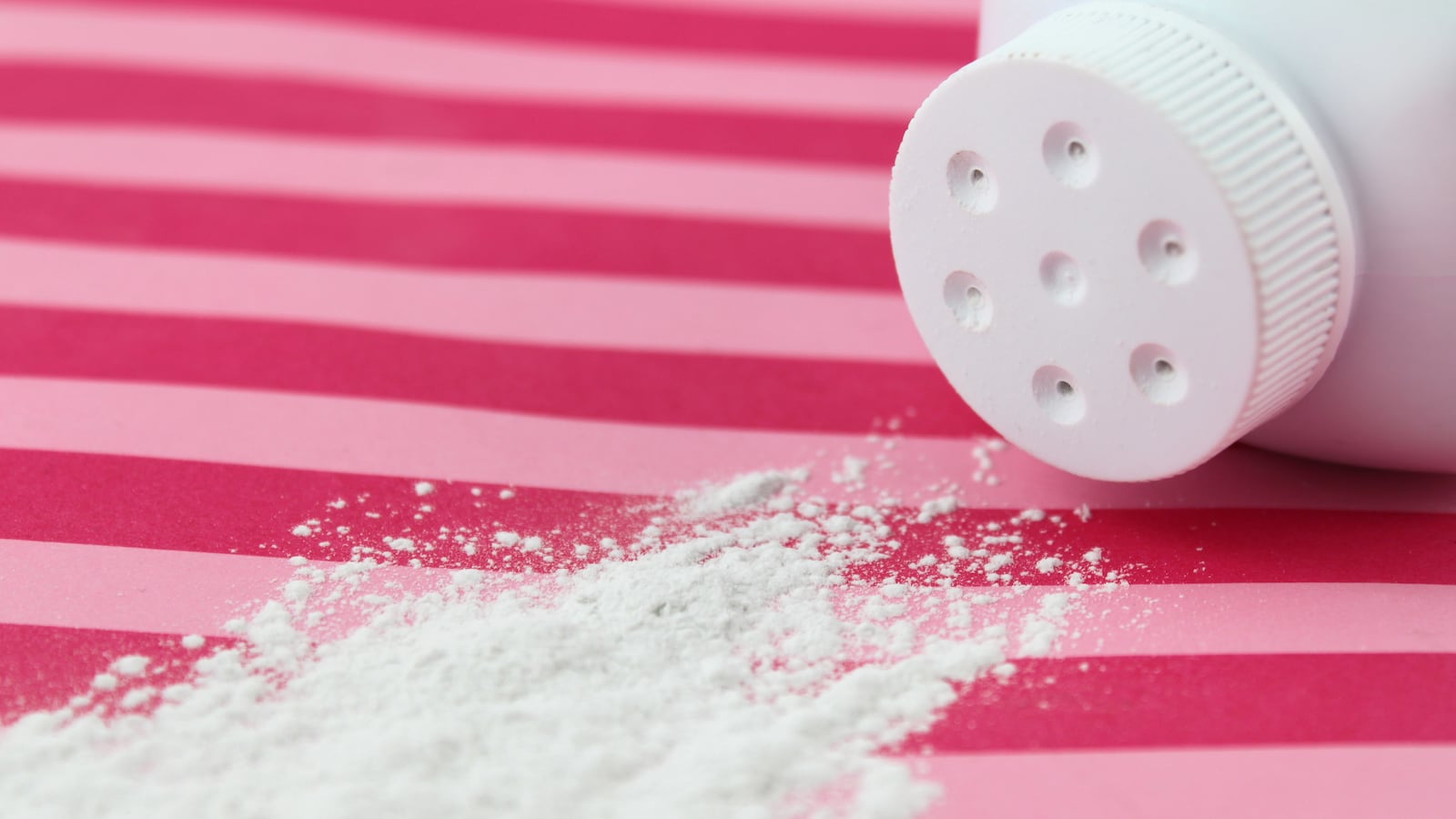Does talcum powder use increase the risk of ovarian cancer? The verdict in a class-action lawsuit may seem to indicate so, but the scientific consensus is not so clear.
This week, a jury in Missouri awarded the family of a woman who died of the disease $72 million in a judgment against Johnson & Johnson, the manufacturer of a product the woman had reportedly used for years. Of that total, $62 million were punitive damages. The late plaintiff was one of dozens suing the company in St. Louis Circuit Court.
At issue was not only whether the talcum powder, which some women use in underwear or on sanitary pads as a moisture-absorbing agent, contributed to the woman’s risk of developing ovarian cancer, but what the company did when faced with questions of its product’s safety.
Talc, the primary ingredient in talcum powder, is chemically similar to asbestos, a known carcinogen, and both are categorized as silicates, compounds that contain both silicon and oxygen within their structure. The two naturally occur together, and asbestos could be found in talcum powder until the 1970s, when it was removed from all products sold within the United States. This history of contamination may confound some studies about the possible risk posed by talc alone.
There are published studies that report an association between talc use and increased risk of ovarian cancer, one of which concludes this association “warrants more formal public health warnings.” However, in many cases both the associated risk and the studies themselves were weak. Further, they are contradicted by yet more studies that find no causal relationship between talcum powder use and ovarian cancer.
The American Cancer Society notes these mixed findings, recommends further research, but advises that any possible increased risk is likely to be very small.
No matter what a jury in Missouri found, if you’ve been using talcum powder in your undergarments, you should not start panicking.
But what bears remembering when verdicts like the one against Johnson & Johnson are handed down is that it’s not simply the scientific evidence that informs them, but what the company may have done in response to that evidence that matters.
“A preponderance of evidence would be the level of proof needed for a case like this,” Elkan Abramowitz, a prominent New York defense attorney, told The Daily Beast. “But also were they negligent in how they treated information?”
As reported by the Associated Press, one piece of evidence introduced against Johnson & Johnson was an internal company memo that compared those who denied a link between talcum powder and ovarian cancer with people who similarly denied a link between smoking and other cancers. It would be “denying the obvious in the face of all evidence to the contrary.”
From a scientific perspective, the evidence to the contrary actually seems shaky at best. But from a legal viewpoint, it’s how Johnson & Johnson dealt with it that matters.
“Was there negligence in permitting this product to be sold?” Abramowitz continued. In the face of concern that its talcum powder might be harmful, that would be the salient question. And a jury clearly concluded the answer was yes.
Were an adolescent patient to ask me if using talcum powder for personal hygiene was safe, I’d say it probably is. (The risk of inhalation for infants has been known for decades, and I don’t recommend it for babies.) For those who want to absolutely minimize any potential for risk, it’s an easy enough product to do without.
Yet no matter how stunning $72 million may appear, it’s important to remember it’s an answer to a very different set of questions. It doesn’t mean the product is really all that dangerous, but that the company should have responded to the possibility differently from how it did.





